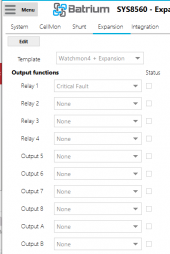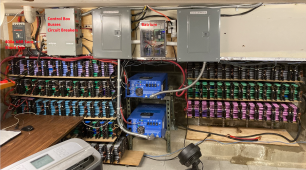Hello all. So I've been doing quite alot of research on the Batrium BMS system. It's certainly a rather complex BMS but I've really warmed up to it alot and absolutely love that I could use a remote trip breaker that I can control even if I'm not home. This type of remote functionality is very important for me. My understanding about Batrium is this, and please correct me if I'm wrong....for the Batrium setup if I'm using 2 batteries (LifePo4), each with their own K9 for example, and if any of those individual batteries has an issue, Batrium will shut down the entire bank and not just the battery that has the issue. Further, my understanding is if one of the batteries (one and not both) reaches its low SOC threshold, the entire battery bank will be disconnected and not just the one with the low SOC. If my understanding is correct, then consider this scenario. Let's say I start off with a single battery with Batrium, say 560Ah. I then add another battery a few months down the road with its own K9, but this time the battery is 840Ah. With this configuration, I'm assuming the 560Ah battery will reach low SOC first, whereas the 840Ah battery may still have a decent amount of Ah left. Does this mean that Batrium will disconnect the entire battery bank because the 560Ah battery has low SOC even though the 840Ah battery still has plenty of charge left? Somehow this doesn't make sense. Am I even looking at this right? I know the obvious solution would be to keep all the batteries at the same Ah, but as I add to my system in the future the cells required to build a battery with the same capacity as what I started out with may not even be available or I may only be able to afford something smaller. Before I pull the trigger on the Batrium purchase, I just need to fully understand what limitations I will be taking on.
Thanks in advance for your feedback.
Thanks in advance for your feedback.






